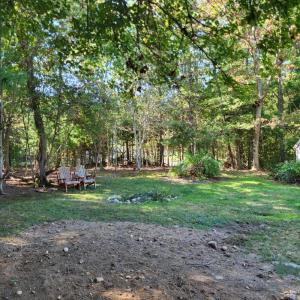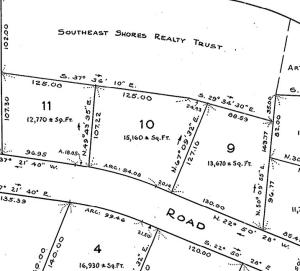Locals cast clouds on proposed solar farm
Representatives of Wareham PV I, LLC spent much of Monday, Nov. 14’s Planning Board meeting reassuring the town that the company’s 3.5-megawatt solar energy facility, which was first proposed last year for 0 Route 25 near Charge Pond Road, would be as safe and eco-friendly as possible. This did little to calm residents’ fear of chemical leakage from the panels, which will go directly above the aquifer that provides Wareham with much of its drinking water.
Jill Risgin, who joined the meeting remotely, spoke for many residents when she said: “We are very concerned. Charge Pond Road does not want this project. There’s just a lot that still needs to be answered… particularly with the water.”
“The groundwater flows away from the town’s municipal water source,” said Jonathan Klavens of the Klavens Law Firm. “Not that we in any way hope that something gets in the ground, especially the groundwater.”
“Any runoff from this project will go directly into the Agawam River,” countered Nancy McHale, “which is a major problem for Wareham.”
McHale and other residents do not get their water from the town’s water supply, but from private wells.
“The general health of the aquifer is extremely important to us,” she said, “regardless of the location of the town wells.”
Klavens and Sarah Ebaugh of the VHB Consulting Firm touted an October report from the Conservation Committee which found that the project was not intruding on any wetlands, as defined by state and local laws.
They said that the company downsized the project by 30 percent — reducing the number of solar panels from 930 to 613 — to abide by Wareham’s environmentally-minded zoning laws.
The laws require a 50-foot “no activity zone” between properties and the waterfront and a 100-foot buffer zone between wetlands.
The facility would even have “critter crossings” to allow wildlife to travel through unharmed.
The biggest concern among locals came from the threat of PFAs, a class of synthetic chemicals which are used to make some solar panels and are responsible for a variety of adverse health effects. In August, Klavens and Ebaugh presented documents from First Solar, the company manufacturing the solar panels, showing that they did not contain PFAs and that the materials they did contain posed no risk to the environment or human health.
Planning Board Vice Chair Carl Schulz asked if replacement panels, needed in case the original panels break or malfunction, would meet the same standards.
“I don’t want to see PFAs more than anyone else,” said Haley Overdal, Director of Development at Longroad Energy, speaking remotely. “If the manufacturer says there are none… There would be no reason for them to go back to it or even think again.”
Annie Hayes, a perennial protester of solar facilities in Wareham, hoped that Wareham PV I would recycle the panels when they can no longer produce electricity. The Planning Board also wanted to know more details about the facility’s decommission plan, the process of dismantling the solar panels when they no longer generate power. This would likely be 30 years after the panels are built.
Klavens and Ebaugh asked for the hearing to be closed and for the Planning Board to vote on the fate of the proposed facility, under the condition that they update the decommissioning plan before construction begins. In an impassioned speech, Barry C. Cosgrove disagreed.
“They don’t live here,” he said. “We do. Please, please, extend this a month. Please bring in other experts. It costs the town nothing.”
Cosgrove got his wish, as the Board voted to continue the hearing to Dec. 12 due to a lack of relevant documents.
“We need to know exactly what the documents say,” Schulz said. “Generally, the board looks to the town website. And that’s where the public looks.”
Without the documents, the public and the Board do not have necessary information, and the Board could not close the hearing — even though they wanted to.
“It’s been a long, hard road,” Chairman Michael King said. “As my mother would say, two weeks ain’t gonna kill ya.”
The wait would be more than two weeks, but the sentiment was still understood.































